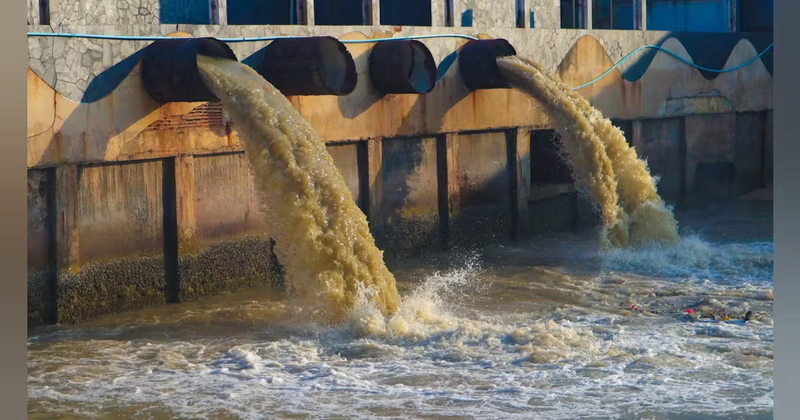The Strategic Role of Metals and Critical Minerals
The Strategic Role of Metals and Critical Minerals in Wastewater Treatment and Sustainability
In today’s industrial and technological landscape, the importance of metals and critical minerals extends beyond their traditional uses in energy, electronics, and transportation. One often overlooked but vital application is in wastewater treatment solutions and water sustainability. With increasing environmental regulations and a global focus on sustainability, the role of these materials in maintaining water quality, reducing pollution, and supporting sustainable industrial processes is becoming more critical.

Understanding Metals and Critical Minerals in Water Treatment
Metals and critical minerals play an integral role in the treatment of wastewater. This includes removing contaminants, recovering valuable resources, and ensuring compliance with environmental regulations. From filtration to advanced treatment processes, metals like iron, copper, aluminum, and critical minerals are essential in purifying water, enabling industries to manage wastewater effectively.
Metals in Water Treatment Processes
1. Iron and Aluminum: These metals are commonly used in coagulation and flocculation processes, which are key steps in the treatment of wastewater. Iron salts, such as ferric chloride, and aluminum-based compounds, like alum, are added to wastewater to bind with contaminants, forming large particles (floc) that can be easily removed. This process helps in the removal of suspended solids, phosphates, and organic matter.
2. Zinc and Copper: Zinc and copper are effective in advanced filtration systems, particularly in controlling microbial growth. Copper ions, for example, have antimicrobial properties and are often used in controlling biofilm formation in water distribution systems. Similarly, zinc can be used in bioremediation processes to neutralize harmful bacteria and enhance overall water quality.
3. Manganese and Magnesium: Manganese is used in the oxidation process to treat iron and manganese in groundwater supplies. These metals, if left untreated, can cause water discoloration and foul taste. Magnesium, on the other hand, is essential for processes like ion exchange, a common method for softening hard water and removing heavy metals.
4. Titanium Dioxide: Titanium dioxide (TiO₂) is used as a photocatalyst in advanced oxidation processes (AOPs), which are employed in the removal of organic pollutants and pharmaceutical residues from wastewater. This technology enhances the breakdown of harmful substances into less toxic forms, supporting the overall goal of water sustainability.

Critical Minerals in Advanced Water Treatment Technologies
Critical minerals are increasingly recognized for their ability to improve wastewater treatment technologies, especially in advanced systems designed to tackle industrial pollutants, heavy metals, and emerging contaminants.
1. Rare Earth Elements: Rare earth elements, like cerium and lanthanum, are used in specialized adsorbent materials that remove heavy metals and phosphorus from wastewater. These materials have a high capacity to capture pollutants, offering efficient solutions for industries dealing with toxic waste.
2. Graphene: Although not traditionally classified as a metal, graphene—a carbon-based material—has critical mineral properties and is revolutionizing water filtration. It offers exceptional filtration capabilities, allowing for the removal of microscopic contaminants, including pathogens, heavy metals, and microplastics. As a result, graphene-based filters are gaining traction in both industrial and municipal wastewater treatment.
3. Cobalt: Cobalt is used in catalytic processes that are part of advanced wastewater treatment systems. It is a critical component in electrocatalysis and oxidation reactions, aiding in the degradation of organic pollutants such as dyes, pharmaceutical residues, and industrial chemicals.
4. Zeolites: Zeolites, composed of aluminosilicate minerals, are used in ion exchange and adsorption technologies to remove ammonia, heavy metals, and radioactive materials from wastewater. They are crucial in industries with high metal content in their effluent, such as mining and chemical processing.
Industrial Applications of Metals and Critical Minerals in Wastewater Management
1. Mining and Metal Recovery: The mining industry generates large volumes of wastewater containing metals like copper, zinc, and lead. Through specialized wastewater treatment techniques, these metals can be recovered, contributing to both pollution control and resource conservation. Technologies like membrane filtration, ion exchange, and electrochemical methods help extract valuable metals from wastewater, which can then be reused in industrial processes.
2. Pharmaceutical and Chemical Industries: Wastewater from the pharmaceutical and chemical industries often contains complex organic compounds and heavy metals. Critical minerals and metals play a significant role in advanced oxidation processes (AOPs), which degrade hazardous chemicals and reduce toxicity. Metals such as cobalt and manganese are used as catalysts in these processes, making them more efficient and less reliant on harsh chemicals.
3. Energy Sector: Power plants, especially those using coal and nuclear energy, generate wastewater containing heavy metals like mercury, cadmium, and lead. These toxic substances must be removed to prevent environmental contamination. Critical minerals are used in filtration and precipitation methods, ensuring that effluent water meets safety standards. Additionally, metals like iron and aluminum are essential for managing sludge generated during the treatment of power plant wastewater.

Environmental Impact and Sustainability
The connection between metals, critical minerals, and environmental sustainability is becoming more pronounced as industries seek to reduce their ecological footprint. Sustainable wastewater treatment is not just about removing contaminants but also about minimizing resource use and energy consumption.
1. Circular Economy: The focus on creating a circular economy has prompted industries to look at wastewater as a resource rather than a waste product. By using metals and minerals for efficient treatment processes, industries can recover valuable materials from wastewater, such as precious metals in electronics manufacturing or phosphates in agriculture, contributing to a sustainable and circular use of resources.
2. Reduction of Water Pollution: The extraction of metals and critical minerals from wastewater not only supports industrial recycling efforts but also helps in reducing overall water pollution. Metal recovery systems can capture toxic metals like arsenic and mercury, which pose significant risks to ecosystems and human health if discharged untreated into the environment.
3. Energy-Efficient Technologies: Modern water treatment systems utilizing metals and critical minerals are becoming more energy-efficient. Technologies such as advanced oxidation and electrochemical treatment use catalysts like cobalt and manganese to break down contaminants with lower energy inputs, making them more sustainable and cost-effective.
Conclusion
Metals and critical minerals are indispensable in wastewater treatment and water sustainability. From traditional coagulation and flocculation processes to advanced oxidation and nanotechnology-based filtration systems, these materials are key to ensuring clean water and reducing environmental impact. As industries continue to evolve, their reliance on metals and critical minerals for efficient and sustainable water treatment will grow, driving innovation and fostering a more sustainable future for water management.
By understanding the intersection of metals, critical minerals, and wastewater treatment, stakeholders can better navigate the complexities of this essential sector and develop solutions that contribute to both environmental sustainability and industrial growth.